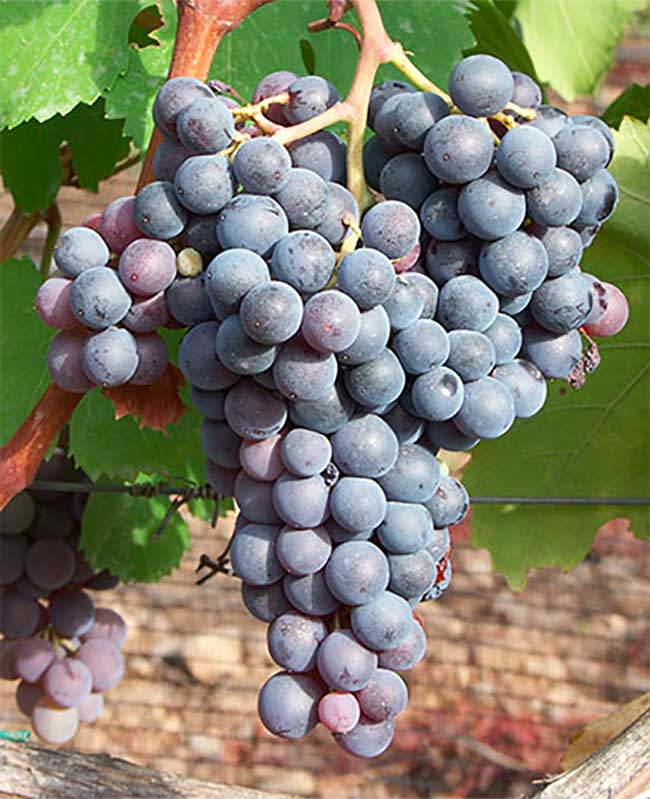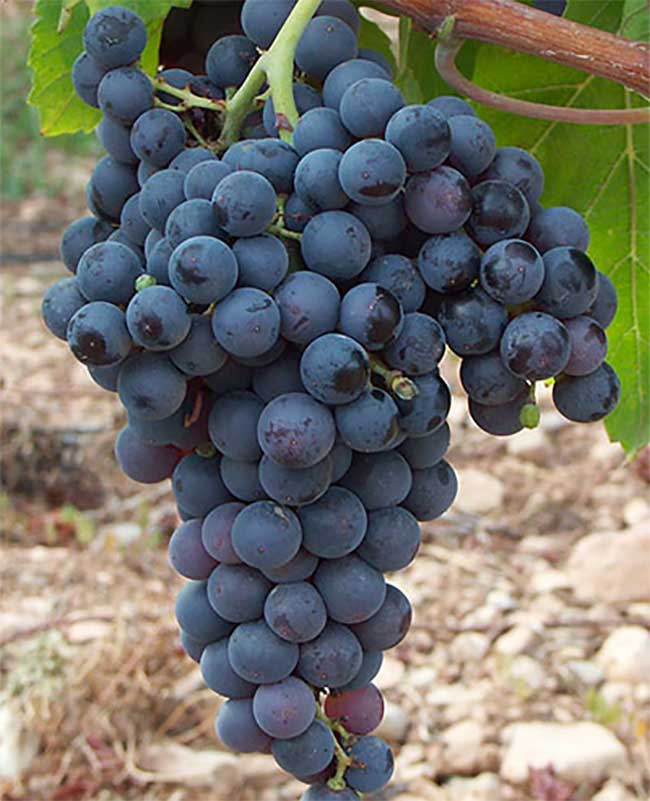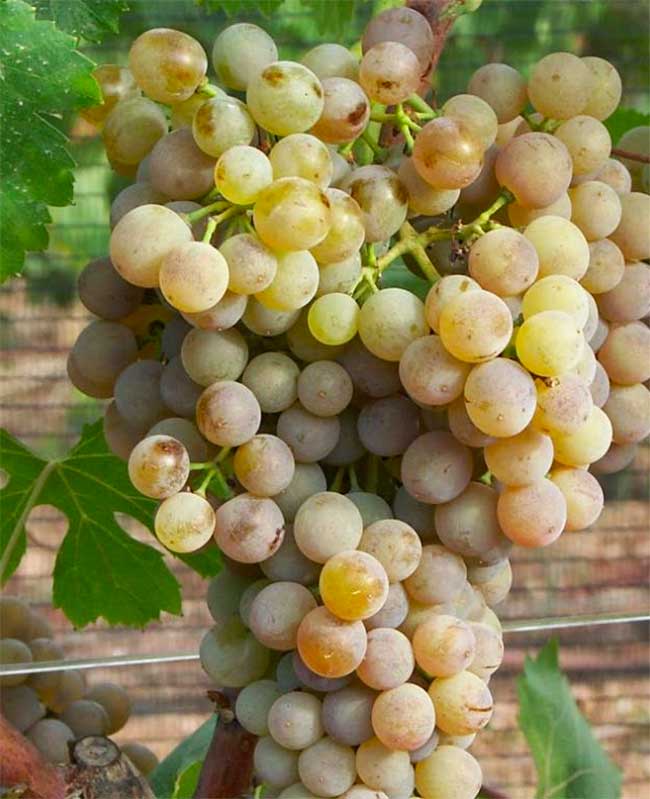.png.transform/rendition-xs/image_image%20(1).png)
Mallorca’s Native Wine Grapes
With fewer than 2,000 hectares of vineyards, it’s no wonder that little wine leaves Mallorca. This explains in part why you may have never heard of Manto Negro, Callet, or Prensal Blanc (aka Moll), let alone the more sparsely planted Fogoneu, Gorgollasa, or Giró Ros

The name Mallorca immediately evokes the blue waters and white sands that frame Spain’s largest Balearic island. Located just 170 km off the Spanish eastern coast, Mallorca is home to roughly 900,000 residents. This number swells each summer, when over 6 million vacationers descend on the island.
With such a large market to satisfy and fewer than 2,000 hectares of vineyards, it’s no wonder that little wine leaves the island, and over 80% is consumed locally. This explains in part why you may have never heard of Manto Negro, Callet, or Prensal Blanc (aka Moll), let alone the more sparsely planted Fogoneu, Gorgollasa, or Giró Ros.
Mallorcan vines then and now
Mallorca’s vineyard area today pales in comparison to the 30,000 ha that were planted before phylloxera arrived in 1890. Devastated vineyards were often replaced with crops such as almonds or apricots, while the rise of tourism in the 1960s delivered another blow. A new generation was incentivized to turn their back on grape growing and invest in construction or the hotel trade.
In the 1980s, French varieties were widely planted, easily recognizable to foreign visitors. While Cabernet Sauvignon, Syrah, Merlot and Chardonnay continue to add structure and/or ripe plush fruit to blends, the past two decades have seen a renewed focus on the island’s native varieties and their ability to stand alone or dominate blends, producing refreshing wines that balance ripeness of fruit with lightness of touch.
Mallorca’s native black grapes

Manto Negro is the island’s most widespread native variety and holds the most importance in the DO Binissalem Mallorca, where it makes up at least 30% of any blend.
While the grape is slowly earning more respect today, according to Pepe Roses of Bodegas Ferrer, it used to be seen as a workhorse, producing dry red wines known for their soft structure and straightforward nature, with notes of red berries and licorice. The grape’s thin skins result in pale color intensity and lower levels of tannins, while the rapid production of sugar sees alcohol levels quickly rise. Comparisons to the Grenache wines of the past immediately spring to mind.
Manto Negro also shows a Grenache-like tendency to oxidize, leading to a much faster evolution in the bottle. The grape’s lower levels of phenolic compounds don’t help, and Pepe Roses attempts to counter this by working with lower yields and carrying out pre-ferment cold soaks both in large cement tanks and in 500l barrels in order to draw out greater color.
Dry red wines are just one side of Manto Negro however, and Roses explains that they split the harvest into three phases: an earlier harvest retains more acidity for the production of both still and sparkling rosés in which the grape’s floral notes dominate, a regular harvest for dry red wines, while a late harvest allows them to make Mantodolç, a sweet red wine with roughly 90 g/l of residual sugar.
Moving east from Binissalem to the larger DO Pla i Llevant, Mallorca’s other star red grape Callet becomes the protagonist. Like Manto Negro, Callet produces wines of pale color intensity and lower tannins. However, it ripens slightly later than Manto Negro, thus retaining marginally higher levels of acidity and achieving physiological ripeness (i.e. flavor and tannin) at lower levels of alcohol, a key asset in an ever-warmer world.
Callet’s red-fruit and floral driven wines may be more familiar to consumers outside the island thanks to high-profile examples from 4 Kilos and Ánima Negra, in which Callet dominates the blends or is the sole varietal.
A range of winemaking techniques are found here as well. Francesc Grimalt of 4 Kilos often vinifies Callet in larger oak vessels, in search of additional tannic structure and texture, while Ánima Negra uses Callet to produce their white wine Quíbia. Here, the skins are given a cold soak of just 2 hours in search of those floral aromatic compounds, after which they’re pressed, and the must is fermented as a white wine much like a blanc de noir. Callet also stars in their red wines, which include ÁN, ÁN/2, and Son Negre.
In many of these wines, complementing the violet and rose aromas of Callet are the savory notes of Fogoneu, another rising star on the island. As Grimalt explained, the grape is actually two grapes: Fogoneu Francés and Fogoneu Mallorquín. Fogoneu Mallorquín in particular is appreciated for contributing higher levels of color but lower levels of alcohol.
Mallorca’s native white grapes

As the workhorse white grape of the island, the productive Prensal Blanc (aka Moll) dominates the wines of DO Binissalem Mallorca, making up at least 50% of the blend. It’s also the second most planted grape of DO Pla i Llevant and is often used to produce easy drinking wines with lower levels of acidity for early consumption.
Generating more excitement of late is Giró Ros, which had become practically extinct. For his part, Pepe Roses believes that Giró Ros has great potential, and may one day be used to replace the ubiquitous Chardonnay in the island’s white blends. Roses is experimenting with different winemaking techniques to see what suits the variety best, starting with a pre-fermentation cold soak to extract more aromatic compounds. Following alcoholic fermentation in stainless steel, he ages the wine briefly on fine lees in older wood, in search of greater mouthfeel.
He cautions however that the grape ripens quite early and quickly drops its acidity if harvested too late. When optimal ripeness is achieved, Giró Ros can offer a range of flavors, from green fruits such as pear and ripe apple, to stone fruits and even tropical fruits such as pineapple in warmer vintages.
The only downside to this diverse offering of wines is that you may have to fly to Mallorca to taste it all. I’m sure you can think of worse things though.
With fewer than 2,000 hectares of vineyards, it’s no wonder that little wine leaves Mallorca. This explains in part why you may have never heard of Manto Negro, Callet, or Prensal Blanc (aka Moll), let alone the more sparsely planted Fogoneu, Gorgollasa, or Giró Ros
Text: Nygil Murrell

